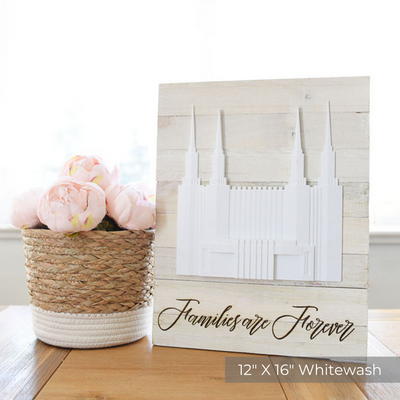Finding the "Real World" in the Temple
By Anne Maxson
There was a large emphasis on the temple and covenants during the April 2024 General Conference of the Church of Jesus Christ of Latter-day Saints. Among the invitations from President Russell M. Nelson, was to study Doctrine and Covenants 109.
Doctrine and Covenants section 109 was given on March 27, 1836, and serves as the dedicatory prayer for the Kirtland Temple. It is a profound expression of faith and dedication, invoking blessings upon the temple and its purposes. Within the prayer, Joseph petitions for divine favor and protection upon those who enter the temple with sincere hearts. He expresses gratitude for the restoration of the gospel and pleads for the Lord's guidance in the establishment of His kingdom on earth.

The prayer acknowledges the sacrifices made by early members of the Church and seeks blessings for their continued faithfulness. It also emphasizes the sanctity of the temple as a place of revelation, instruction, and worship.
In the temple, we can draw closer to God, receive essential ordinances, and make sacred covenants. Through temple ordinances, we can emphasize the eternal nature of family relationships and our own spiritual progression.
Temples are not just physical structures but hallowed spaces where heaven touches earth, and individuals can experience a foretaste of the divine.
Temples also serve as places of learning and revelation, where we can seek guidance, receive instruction, and gain insight into life's most profound questions. The quiet and reverent atmosphere of the temple facilitates personal reflection and spiritual communion with the divine.
In his talk at the April 2024 General Conference, President Russell M. Nelson said, “Time in the temple will help you to think celestial and to catch a vision of who you really are, who you can become, and the kind of life you can have forever. Regular temple worship will enhance the way you see yourself and how you fit into God’s magnificent plan. I promise you that.”
During a recent Relief Society meeting discussing President Nelson’s remarks, a sister shared a thought that stuck with me. She explained that often we go to the temple when seeking refuge from the “real world.” However, the refuge that we find from our temporary circumstances often comes in the form of feeling connected to our divine identity and potential. Which is more “real” - temporary circumstances or divine and eternal identity? Isn’t the “real world” that of the divine and the eternal? Isn’t it in fact the “real world” that we find in the temple that provides refuge from the temporary problems of our current circumstances?
In his book, “Refuge and Reality: The Blessings of the Temple,” Elder John H. Groberg talks about when he served as president of the Idaho Falls Idaho Temple. Often, as people left the temple, he would hear them talk about needing to leave the temple and reenter the “real world.” He affirmed that the temple represents the “real world” of the eternities. He said, “That which lasts forever is real; that which does not last forever is not real. The temple is the real world, not this temporal one.”
Temples are seen as beacons of light and hope in a world filled with turmoil and uncertainty. They symbolize the eternal nature of God's love and His desire for all His children to return to Him. We view temple attendance as a sacred duty and privilege not only because it helps us to share the gospel with those who have passed on but also because we are able to feel the eternal nature of the work. What a wonderful blessing it is to be able to attend the temple as frequently as we are able, to be reminded of the “real world,” our divine potential and all of the promises that our Heavenly Father and Savior have planned for us.











Leave a comment